| |
Yves:
Peintures - Sarah Marienfeldt
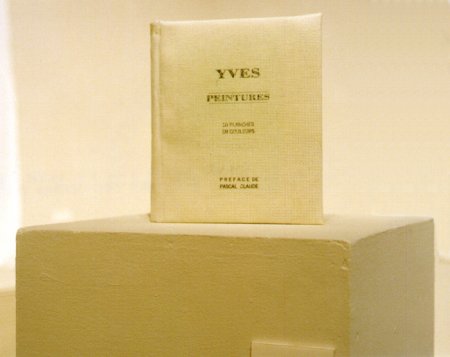 ____________________ _________________________ _________________________
_________________________ _________________________ _________________________
_________________________ _________________________ _________________________
_________________________ _________________________ _________________________
_________________________ _________________________ _________________________
_________________________ _________________________ _________________________
_________________________ _________________________ _________________________
_________________________ _________________________
____________________ _________________________ _________________________
_________________________ _________________________ _________________________
_________________________ _________________________ _________________________
_________________________ _________________________ _________________________
_________________________ _________________________ _________________________
_________________________ _________________________ _________________________
_________________________ _________________________ _________________________
_________________________ _________________________
_________________________________________________________________ __________________________________________________________________________________________
__________________________________________________________________________________________
__________________________________________________________________________________________
__________________________________________________________________________________________
__________________________________________________________________________________________
__________________________________________________________________________________________
__________________________________________________
The publication of Yves:
Peintures on November 18, 1954, marks the beginning of Yves Klein's
public existence as an artist. This work, which is a booklet 'about' his
art, provides the first significant public exposure for Klein's artistic
endeavours. Proclaiming Klein's interest in monochrome painting, Yves:
Peintures is a conceptually rich piece which introduces many of the
qualities and issues which form the basis of Klein's body of work. Foregrounding
issues of immateriality, and of the immediate present, this piece paves
the way for the development of ideas which are at the heart of Klein's
theory and of the Nouveaux Realisme movement. Heralding Klein's unique
approach to art, Yves: Peintures not only introduces Klein's theory
of the monochrome, but it also plants the seed of mythology which grows
to surround the artist himself.
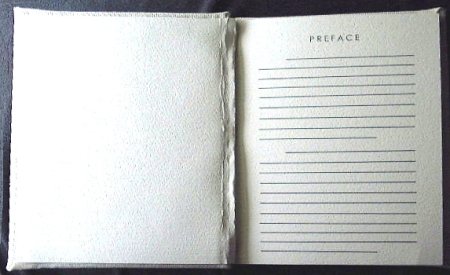 Stemming
from a practical need for a lucrative career and from a desire to explore
artistic interests,
Yves: Peintures is Klein's answer to both financial
and artistic concerns. Realizing that judo alone is not going to support
him, Klein decides to pursue his interest in art. At this time, Klein is
already experimenting with monochrome painting, but until the publication
of this book work, his artistic theory is exposed only to a few of his
friends and to the patrons of the judo club in which he displays some of
his monochromes. As-of-yet unknown in the art world, Klein has no artistic
authority. Consequently, he must determine a means of putting forward his
theory of monochromatic painting in a way which will be taken seriously
by the art world. Recognizing the necessity of establishing a commanding
body of art, Klein is forced to devise a practical method of exposing his
work to a large audience quickly and economically. Yves: Peintures
is Klein's brilliant solution to the question of how to communicate an
artistic project quickly and authoritatively, on a limited budget. Financed
by his ever-supportive aunt and published in the printing shop of a friend's
father, this 'catalogue' of Klein's work is a practical means of forwarding
his artistic theory and of staking out a place for himself in the art world.
Consisting of a three-page preface and ten colour plates, and printed on
richly textured, high-quality paper, this 'catalogue' of works lends authority
to itself, in and of itself. Printed by a master printer, labelled and
individually numbered, Yves: Peintures demands a place for itself
in the art world. Klein essentially creates a body of work through this
one piece; introducing an entire collection of works in a single publication.
By adopting the catalogue format for his book work, Klein is able to show
his art and communicate his ideas without toil and rejection. He is able
to achieve public exposure without going through the expense of making
numerous paintings and the difficulty of finding a space in which to show
his work. Klein simply implies this process, without actually participating
in it. He manufactures his own history and acceptance in the art world,
creating the illusion of the existence of a monochrome artist whose work
is housed in London, Madrid, Nice, Paris, and Tokyo. This early piece is
incredibly multifaceted and ephemeral, as it seems to live in, and assert,
past, present, and future, simultaneously. Stemming
from a practical need for a lucrative career and from a desire to explore
artistic interests,
Yves: Peintures is Klein's answer to both financial
and artistic concerns. Realizing that judo alone is not going to support
him, Klein decides to pursue his interest in art. At this time, Klein is
already experimenting with monochrome painting, but until the publication
of this book work, his artistic theory is exposed only to a few of his
friends and to the patrons of the judo club in which he displays some of
his monochromes. As-of-yet unknown in the art world, Klein has no artistic
authority. Consequently, he must determine a means of putting forward his
theory of monochromatic painting in a way which will be taken seriously
by the art world. Recognizing the necessity of establishing a commanding
body of art, Klein is forced to devise a practical method of exposing his
work to a large audience quickly and economically. Yves: Peintures
is Klein's brilliant solution to the question of how to communicate an
artistic project quickly and authoritatively, on a limited budget. Financed
by his ever-supportive aunt and published in the printing shop of a friend's
father, this 'catalogue' of Klein's work is a practical means of forwarding
his artistic theory and of staking out a place for himself in the art world.
Consisting of a three-page preface and ten colour plates, and printed on
richly textured, high-quality paper, this 'catalogue' of works lends authority
to itself, in and of itself. Printed by a master printer, labelled and
individually numbered, Yves: Peintures demands a place for itself
in the art world. Klein essentially creates a body of work through this
one piece; introducing an entire collection of works in a single publication.
By adopting the catalogue format for his book work, Klein is able to show
his art and communicate his ideas without toil and rejection. He is able
to achieve public exposure without going through the expense of making
numerous paintings and the difficulty of finding a space in which to show
his work. Klein simply implies this process, without actually participating
in it. He manufactures his own history and acceptance in the art world,
creating the illusion of the existence of a monochrome artist whose work
is housed in London, Madrid, Nice, Paris, and Tokyo. This early piece is
incredibly multifaceted and ephemeral, as it seems to live in, and assert,
past, present, and future, simultaneously.
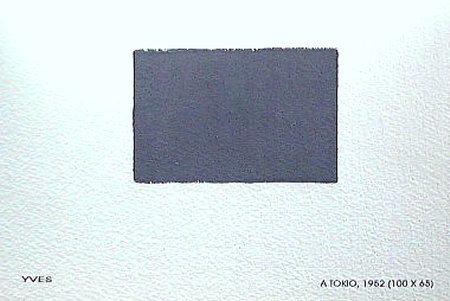 Aside
from offering Klein an ingenious means of breaking into the art world,
the form of
Yves: Peintures plays an important role in the introduction
of his new perspective on art. With Klein, as with the other nouveaux realistes,
there is an increasing emphasis on the conceptual side of art-making. In
the twentieth-century, the infiltration of mundane subjects and objects
into art alters the role of the artist and of art itself. As the emphasis
increasingly lies on the artist's perception or appropriation of things,
rather than on the actual thing which is created, there is a widespread
revaluation of the nature of the art object. In this piece Klein begins
to blur the distinction between object and idea as he forces us to search
for the object and to question our own definitions of it. By giving us
a 'catalogue' of works, Klein sets us up to assume that these works exist
somewhere outside of the 'catalogue', and that what we are given is a documentation.
Viewed in this light, this piece is valuable simply as the publication
of a 'new' theory or direction in art. Klein's book work is interesting
on this level as an advocation of purely monochromatic painting as a controversial
artistic project; however, this is not the most interesting or controversial
aspect of the work. It is the recognition that this is not a strictly documentary
publication which is the most exciting and thought-provoking aspect of
our experience with this work. Adopting the traditional format of the document,
Klein shapes our expectations or assumptions, only to confuse or disrupt
them. Giving us the dimensions of these 'paintings' without specifying
the units of measurement, Klein confounds the validity of his 'document',
and consequently, clouds our definition of the art object. We are forced
to ask ourselves where and if Klein's artwork exists. By giving us dimensions
which may refer to either the colour plates themselves or to large-scale
paintings, Klein confounds the distinction between the reproduction and
the work of art. These are not photographic representations. Are they simply
reproductions or are they in fact the works themselves? Yves: Peintures
is full of such questions and contradictions which make us uncertain of
the nature of the book which is in front of us. Klein creates a sense of
ambiguity by giving us only the most pertinent information, much of which
is inconsistent or insignificant. Aside
from offering Klein an ingenious means of breaking into the art world,
the form of
Yves: Peintures plays an important role in the introduction
of his new perspective on art. With Klein, as with the other nouveaux realistes,
there is an increasing emphasis on the conceptual side of art-making. In
the twentieth-century, the infiltration of mundane subjects and objects
into art alters the role of the artist and of art itself. As the emphasis
increasingly lies on the artist's perception or appropriation of things,
rather than on the actual thing which is created, there is a widespread
revaluation of the nature of the art object. In this piece Klein begins
to blur the distinction between object and idea as he forces us to search
for the object and to question our own definitions of it. By giving us
a 'catalogue' of works, Klein sets us up to assume that these works exist
somewhere outside of the 'catalogue', and that what we are given is a documentation.
Viewed in this light, this piece is valuable simply as the publication
of a 'new' theory or direction in art. Klein's book work is interesting
on this level as an advocation of purely monochromatic painting as a controversial
artistic project; however, this is not the most interesting or controversial
aspect of the work. It is the recognition that this is not a strictly documentary
publication which is the most exciting and thought-provoking aspect of
our experience with this work. Adopting the traditional format of the document,
Klein shapes our expectations or assumptions, only to confuse or disrupt
them. Giving us the dimensions of these 'paintings' without specifying
the units of measurement, Klein confounds the validity of his 'document',
and consequently, clouds our definition of the art object. We are forced
to ask ourselves where and if Klein's artwork exists. By giving us dimensions
which may refer to either the colour plates themselves or to large-scale
paintings, Klein confounds the distinction between the reproduction and
the work of art. These are not photographic representations. Are they simply
reproductions or are they in fact the works themselves? Yves: Peintures
is full of such questions and contradictions which make us uncertain of
the nature of the book which is in front of us. Klein creates a sense of
ambiguity by giving us only the most pertinent information, much of which
is inconsistent or insignificant.
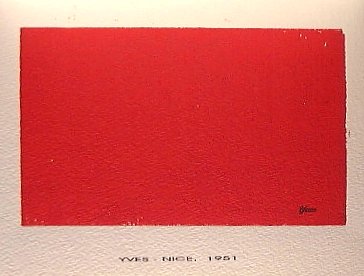 The
beauty of Yves: Peintures lies in its ambiguity, as it allows Klein
to shift and unite traditional artistic boundaries and definitions. Prefaced
by a wordless text, the work maintains an ambiguity and an openness. Klein
does not dictate how we interpret his works, he simply lets the monochromes
speak for themselves. The preface does not give us a commentary, but simply
invites us to open ourselves up to thinking in new ways. All of Klein's
work is very much about the immaterial, sensorial experience of his art
and of life in general, and so, the preface's expression, or rather non-expression,
perfectly illustrates the existence of Klein's work outside of traditional
definitions. Klein's monochromes and his other works are not about discourse
or document, they are about experience. Yves: Peintures, then, transforms
the document into an experience. Themes of immateriality and of the immediate
present, are born in this piece, foreshadowing the path of development
of Klein's artistic career. In retrospect, this piece can be seen to embody
all of the central issues of Klein's artistic endeavours, as it both introduces
and anticipates his aesthetic concerns. Beginning with the monochrome,
all of Klein's major artistic projects seem to stem from this single introductory
work as they grow out of the theories and issues which are first set forth
here. Yves: Peintures, in fact, embodies all of the essential elements
of Klein's artistic career. By clouding the distinction between the idea
and the art object, and by creating a mythology surrounding the artwork
and the artist, this piece acts as a precursor to Klein's publication of
Dimanche
in 1960. Another pseudo-document, this fabricated newspaper also evokes
questions surrounding the nature of the art object. Creating an inextricable
connection between the artwork and its publicity, this piece also pushes
the boundaries of art beyond the object. Focussing on the element of experience
and of life, this piece, like its predecessor need not be founded in fact,
and is perhaps even more interesting because it is not. Like the 'catalogue',
the newspaper is a kind of proposition or suggestion and it is our interaction
with it, not with that which lies behind it, which is important. For Klein,
to be bound to the object is to be restricted from the immaterial experience.
The presence of the object is unnecessary, and may even be limiting, as
the nature of the object begins to dictate our sensorial experience. Yves:
Peintures, then, is an essential transitionary moment in Klein's artistic
career which is essential to the development of his theories of areas of
sensibility and of the void. The
beauty of Yves: Peintures lies in its ambiguity, as it allows Klein
to shift and unite traditional artistic boundaries and definitions. Prefaced
by a wordless text, the work maintains an ambiguity and an openness. Klein
does not dictate how we interpret his works, he simply lets the monochromes
speak for themselves. The preface does not give us a commentary, but simply
invites us to open ourselves up to thinking in new ways. All of Klein's
work is very much about the immaterial, sensorial experience of his art
and of life in general, and so, the preface's expression, or rather non-expression,
perfectly illustrates the existence of Klein's work outside of traditional
definitions. Klein's monochromes and his other works are not about discourse
or document, they are about experience. Yves: Peintures, then, transforms
the document into an experience. Themes of immateriality and of the immediate
present, are born in this piece, foreshadowing the path of development
of Klein's artistic career. In retrospect, this piece can be seen to embody
all of the central issues of Klein's artistic endeavours, as it both introduces
and anticipates his aesthetic concerns. Beginning with the monochrome,
all of Klein's major artistic projects seem to stem from this single introductory
work as they grow out of the theories and issues which are first set forth
here. Yves: Peintures, in fact, embodies all of the essential elements
of Klein's artistic career. By clouding the distinction between the idea
and the art object, and by creating a mythology surrounding the artwork
and the artist, this piece acts as a precursor to Klein's publication of
Dimanche
in 1960. Another pseudo-document, this fabricated newspaper also evokes
questions surrounding the nature of the art object. Creating an inextricable
connection between the artwork and its publicity, this piece also pushes
the boundaries of art beyond the object. Focussing on the element of experience
and of life, this piece, like its predecessor need not be founded in fact,
and is perhaps even more interesting because it is not. Like the 'catalogue',
the newspaper is a kind of proposition or suggestion and it is our interaction
with it, not with that which lies behind it, which is important. For Klein,
to be bound to the object is to be restricted from the immaterial experience.
The presence of the object is unnecessary, and may even be limiting, as
the nature of the object begins to dictate our sensorial experience. Yves:
Peintures, then, is an essential transitionary moment in Klein's artistic
career which is essential to the development of his theories of areas of
sensibility and of the void.
The act of reproducing Yves:
Peintures is inherently problematic because of the nature of the work
itself. Because the identity of the work itself is fugitive, it is difficult
to develop a concrete sense of what exactly is being reproduced here. If
we view Klein's 'catalogue' as simply that, a reproduction of his body
of work, then a reproduction of the catalogue should not be essentially
different from the original catalogue - a reproduction itself. If, however,
we see the 'catalogue' as the actual artwork, the act of reproducing it
is vastly different. By uniting conceptual and sensorial realms with concrete,
physical reality, Klein problematised the very definition of art. It would
seem then, that the real art of this work lies not in its production or
reproduction, but in its conception in the mind of Yves Klein, and is then,
something which can never be reproduced.
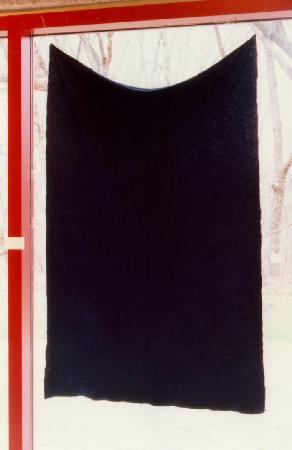 __________________________________________ _______________________________________________
_______________________________________________ _______________________________________________
_______________________________________________ _______________________________________________
_______________________________________________ _______________________________________________
_______________________________________________ _______________________________________________
_______________________________________________ _______________________________________________
_______________________________________________ _______________________________________________
_______________________________________________ _______________________________________________
_______________________________________________ _______________________________________________
_______________________________________________ _______________________________________________
_______________________________________________ _______________________________________________
_______________________________________________ _______________________________________________
_______________________________________________ _______________________________________________
_______________________________________________ _______________________________________________
_______________________________________________ _______________________________________________
__________________________________________ _______________________________________________
_______________________________________________ _______________________________________________
_______________________________________________ _______________________________________________
_______________________________________________ _______________________________________________
_______________________________________________ _______________________________________________
_______________________________________________ _______________________________________________
_______________________________________________ _______________________________________________
_______________________________________________ _______________________________________________
_______________________________________________ _______________________________________________
_______________________________________________ _______________________________________________
_______________________________________________ _______________________________________________
_______________________________________________ _______________________________________________
_______________________________________________ _______________________________________________
_______________________________________________ _______________________________________________
_______________________________________________ _______________________________________________
_______________________________________________________________________________________
__________________________________________________________________________________________
__________________________________________________________________________________________
__________________________________________________________________________________________
__________________________________________________________________________________________
________________________________________________________________________________
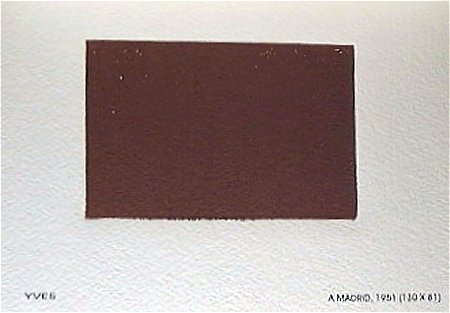
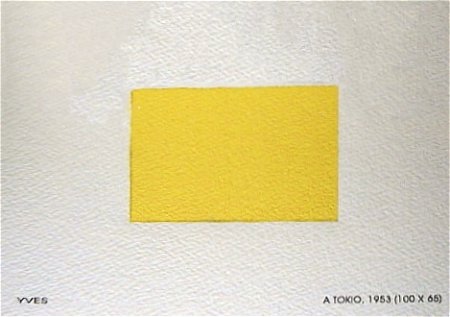
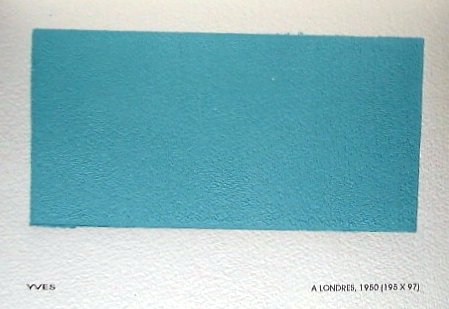
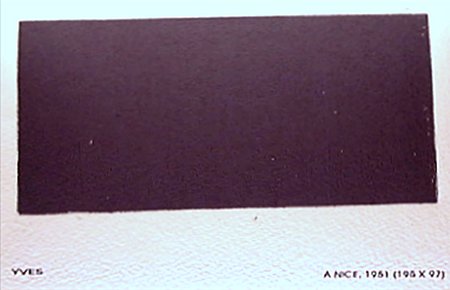
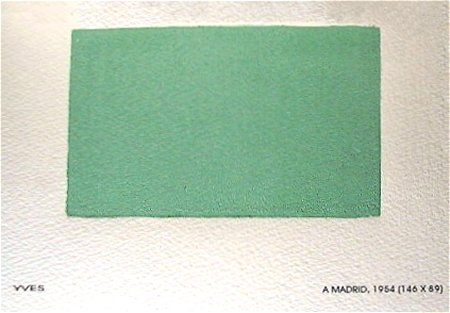
|
|
 ____________________ _________________________ _________________________
_________________________ _________________________ _________________________
_________________________ _________________________ _________________________
_________________________ _________________________ _________________________
_________________________ _________________________ _________________________
_________________________ _________________________ _________________________
_________________________ _________________________ _________________________
_________________________ _________________________
____________________ _________________________ _________________________
_________________________ _________________________ _________________________
_________________________ _________________________ _________________________
_________________________ _________________________ _________________________
_________________________ _________________________ _________________________
_________________________ _________________________ _________________________
_________________________ _________________________ _________________________
_________________________ _________________________

 Stemming
from a practical need for a lucrative career and from a desire to explore
artistic interests,
Yves: Peintures is Klein's answer to both financial
and artistic concerns. Realizing that judo alone is not going to support
him, Klein decides to pursue his interest in art. At this time, Klein is
already experimenting with monochrome painting, but until the publication
of this book work, his artistic theory is exposed only to a few of his
friends and to the patrons of the judo club in which he displays some of
his monochromes. As-of-yet unknown in the art world, Klein has no artistic
authority. Consequently, he must determine a means of putting forward his
theory of monochromatic painting in a way which will be taken seriously
by the art world. Recognizing the necessity of establishing a commanding
body of art, Klein is forced to devise a practical method of exposing his
work to a large audience quickly and economically. Yves: Peintures
is Klein's brilliant solution to the question of how to communicate an
artistic project quickly and authoritatively, on a limited budget. Financed
by his ever-supportive aunt and published in the printing shop of a friend's
father, this 'catalogue' of Klein's work is a practical means of forwarding
his artistic theory and of staking out a place for himself in the art world.
Consisting of a three-page preface and ten colour plates, and printed on
richly textured, high-quality paper, this 'catalogue' of works lends authority
to itself, in and of itself. Printed by a master printer, labelled and
individually numbered, Yves: Peintures demands a place for itself
in the art world. Klein essentially creates a body of work through this
one piece; introducing an entire collection of works in a single publication.
By adopting the catalogue format for his book work, Klein is able to show
his art and communicate his ideas without toil and rejection. He is able
to achieve public exposure without going through the expense of making
numerous paintings and the difficulty of finding a space in which to show
his work. Klein simply implies this process, without actually participating
in it. He manufactures his own history and acceptance in the art world,
creating the illusion of the existence of a monochrome artist whose work
is housed in London, Madrid, Nice, Paris, and Tokyo. This early piece is
incredibly multifaceted and ephemeral, as it seems to live in, and assert,
past, present, and future, simultaneously.
Stemming
from a practical need for a lucrative career and from a desire to explore
artistic interests,
Yves: Peintures is Klein's answer to both financial
and artistic concerns. Realizing that judo alone is not going to support
him, Klein decides to pursue his interest in art. At this time, Klein is
already experimenting with monochrome painting, but until the publication
of this book work, his artistic theory is exposed only to a few of his
friends and to the patrons of the judo club in which he displays some of
his monochromes. As-of-yet unknown in the art world, Klein has no artistic
authority. Consequently, he must determine a means of putting forward his
theory of monochromatic painting in a way which will be taken seriously
by the art world. Recognizing the necessity of establishing a commanding
body of art, Klein is forced to devise a practical method of exposing his
work to a large audience quickly and economically. Yves: Peintures
is Klein's brilliant solution to the question of how to communicate an
artistic project quickly and authoritatively, on a limited budget. Financed
by his ever-supportive aunt and published in the printing shop of a friend's
father, this 'catalogue' of Klein's work is a practical means of forwarding
his artistic theory and of staking out a place for himself in the art world.
Consisting of a three-page preface and ten colour plates, and printed on
richly textured, high-quality paper, this 'catalogue' of works lends authority
to itself, in and of itself. Printed by a master printer, labelled and
individually numbered, Yves: Peintures demands a place for itself
in the art world. Klein essentially creates a body of work through this
one piece; introducing an entire collection of works in a single publication.
By adopting the catalogue format for his book work, Klein is able to show
his art and communicate his ideas without toil and rejection. He is able
to achieve public exposure without going through the expense of making
numerous paintings and the difficulty of finding a space in which to show
his work. Klein simply implies this process, without actually participating
in it. He manufactures his own history and acceptance in the art world,
creating the illusion of the existence of a monochrome artist whose work
is housed in London, Madrid, Nice, Paris, and Tokyo. This early piece is
incredibly multifaceted and ephemeral, as it seems to live in, and assert,
past, present, and future, simultaneously.
 Aside
from offering Klein an ingenious means of breaking into the art world,
the form of
Yves: Peintures plays an important role in the introduction
of his new perspective on art. With Klein, as with the other nouveaux realistes,
there is an increasing emphasis on the conceptual side of art-making. In
the twentieth-century, the infiltration of mundane subjects and objects
into art alters the role of the artist and of art itself. As the emphasis
increasingly lies on the artist's perception or appropriation of things,
rather than on the actual thing which is created, there is a widespread
revaluation of the nature of the art object. In this piece Klein begins
to blur the distinction between object and idea as he forces us to search
for the object and to question our own definitions of it. By giving us
a 'catalogue' of works, Klein sets us up to assume that these works exist
somewhere outside of the 'catalogue', and that what we are given is a documentation.
Viewed in this light, this piece is valuable simply as the publication
of a 'new' theory or direction in art. Klein's book work is interesting
on this level as an advocation of purely monochromatic painting as a controversial
artistic project; however, this is not the most interesting or controversial
aspect of the work. It is the recognition that this is not a strictly documentary
publication which is the most exciting and thought-provoking aspect of
our experience with this work. Adopting the traditional format of the document,
Klein shapes our expectations or assumptions, only to confuse or disrupt
them. Giving us the dimensions of these 'paintings' without specifying
the units of measurement, Klein confounds the validity of his 'document',
and consequently, clouds our definition of the art object. We are forced
to ask ourselves where and if Klein's artwork exists. By giving us dimensions
which may refer to either the colour plates themselves or to large-scale
paintings, Klein confounds the distinction between the reproduction and
the work of art. These are not photographic representations. Are they simply
reproductions or are they in fact the works themselves? Yves: Peintures
is full of such questions and contradictions which make us uncertain of
the nature of the book which is in front of us. Klein creates a sense of
ambiguity by giving us only the most pertinent information, much of which
is inconsistent or insignificant.
Aside
from offering Klein an ingenious means of breaking into the art world,
the form of
Yves: Peintures plays an important role in the introduction
of his new perspective on art. With Klein, as with the other nouveaux realistes,
there is an increasing emphasis on the conceptual side of art-making. In
the twentieth-century, the infiltration of mundane subjects and objects
into art alters the role of the artist and of art itself. As the emphasis
increasingly lies on the artist's perception or appropriation of things,
rather than on the actual thing which is created, there is a widespread
revaluation of the nature of the art object. In this piece Klein begins
to blur the distinction between object and idea as he forces us to search
for the object and to question our own definitions of it. By giving us
a 'catalogue' of works, Klein sets us up to assume that these works exist
somewhere outside of the 'catalogue', and that what we are given is a documentation.
Viewed in this light, this piece is valuable simply as the publication
of a 'new' theory or direction in art. Klein's book work is interesting
on this level as an advocation of purely monochromatic painting as a controversial
artistic project; however, this is not the most interesting or controversial
aspect of the work. It is the recognition that this is not a strictly documentary
publication which is the most exciting and thought-provoking aspect of
our experience with this work. Adopting the traditional format of the document,
Klein shapes our expectations or assumptions, only to confuse or disrupt
them. Giving us the dimensions of these 'paintings' without specifying
the units of measurement, Klein confounds the validity of his 'document',
and consequently, clouds our definition of the art object. We are forced
to ask ourselves where and if Klein's artwork exists. By giving us dimensions
which may refer to either the colour plates themselves or to large-scale
paintings, Klein confounds the distinction between the reproduction and
the work of art. These are not photographic representations. Are they simply
reproductions or are they in fact the works themselves? Yves: Peintures
is full of such questions and contradictions which make us uncertain of
the nature of the book which is in front of us. Klein creates a sense of
ambiguity by giving us only the most pertinent information, much of which
is inconsistent or insignificant.
 The
beauty of Yves: Peintures lies in its ambiguity, as it allows Klein
to shift and unite traditional artistic boundaries and definitions. Prefaced
by a wordless text, the work maintains an ambiguity and an openness. Klein
does not dictate how we interpret his works, he simply lets the monochromes
speak for themselves. The preface does not give us a commentary, but simply
invites us to open ourselves up to thinking in new ways. All of Klein's
work is very much about the immaterial, sensorial experience of his art
and of life in general, and so, the preface's expression, or rather non-expression,
perfectly illustrates the existence of Klein's work outside of traditional
definitions. Klein's monochromes and his other works are not about discourse
or document, they are about experience. Yves: Peintures, then, transforms
the document into an experience. Themes of immateriality and of the immediate
present, are born in this piece, foreshadowing the path of development
of Klein's artistic career. In retrospect, this piece can be seen to embody
all of the central issues of Klein's artistic endeavours, as it both introduces
and anticipates his aesthetic concerns. Beginning with the monochrome,
all of Klein's major artistic projects seem to stem from this single introductory
work as they grow out of the theories and issues which are first set forth
here. Yves: Peintures, in fact, embodies all of the essential elements
of Klein's artistic career. By clouding the distinction between the idea
and the art object, and by creating a mythology surrounding the artwork
and the artist, this piece acts as a precursor to Klein's publication of
Dimanche
in 1960. Another pseudo-document, this fabricated newspaper also evokes
questions surrounding the nature of the art object. Creating an inextricable
connection between the artwork and its publicity, this piece also pushes
the boundaries of art beyond the object. Focussing on the element of experience
and of life, this piece, like its predecessor need not be founded in fact,
and is perhaps even more interesting because it is not. Like the 'catalogue',
the newspaper is a kind of proposition or suggestion and it is our interaction
with it, not with that which lies behind it, which is important. For Klein,
to be bound to the object is to be restricted from the immaterial experience.
The presence of the object is unnecessary, and may even be limiting, as
the nature of the object begins to dictate our sensorial experience. Yves:
Peintures, then, is an essential transitionary moment in Klein's artistic
career which is essential to the development of his theories of areas of
sensibility and of the void.
The
beauty of Yves: Peintures lies in its ambiguity, as it allows Klein
to shift and unite traditional artistic boundaries and definitions. Prefaced
by a wordless text, the work maintains an ambiguity and an openness. Klein
does not dictate how we interpret his works, he simply lets the monochromes
speak for themselves. The preface does not give us a commentary, but simply
invites us to open ourselves up to thinking in new ways. All of Klein's
work is very much about the immaterial, sensorial experience of his art
and of life in general, and so, the preface's expression, or rather non-expression,
perfectly illustrates the existence of Klein's work outside of traditional
definitions. Klein's monochromes and his other works are not about discourse
or document, they are about experience. Yves: Peintures, then, transforms
the document into an experience. Themes of immateriality and of the immediate
present, are born in this piece, foreshadowing the path of development
of Klein's artistic career. In retrospect, this piece can be seen to embody
all of the central issues of Klein's artistic endeavours, as it both introduces
and anticipates his aesthetic concerns. Beginning with the monochrome,
all of Klein's major artistic projects seem to stem from this single introductory
work as they grow out of the theories and issues which are first set forth
here. Yves: Peintures, in fact, embodies all of the essential elements
of Klein's artistic career. By clouding the distinction between the idea
and the art object, and by creating a mythology surrounding the artwork
and the artist, this piece acts as a precursor to Klein's publication of
Dimanche
in 1960. Another pseudo-document, this fabricated newspaper also evokes
questions surrounding the nature of the art object. Creating an inextricable
connection between the artwork and its publicity, this piece also pushes
the boundaries of art beyond the object. Focussing on the element of experience
and of life, this piece, like its predecessor need not be founded in fact,
and is perhaps even more interesting because it is not. Like the 'catalogue',
the newspaper is a kind of proposition or suggestion and it is our interaction
with it, not with that which lies behind it, which is important. For Klein,
to be bound to the object is to be restricted from the immaterial experience.
The presence of the object is unnecessary, and may even be limiting, as
the nature of the object begins to dictate our sensorial experience. Yves:
Peintures, then, is an essential transitionary moment in Klein's artistic
career which is essential to the development of his theories of areas of
sensibility and of the void.
 __________________________________________ _______________________________________________
_______________________________________________ _______________________________________________
_______________________________________________ _______________________________________________
_______________________________________________ _______________________________________________
_______________________________________________ _______________________________________________
_______________________________________________ _______________________________________________
_______________________________________________ _______________________________________________
_______________________________________________ _______________________________________________
_______________________________________________ _______________________________________________
_______________________________________________ _______________________________________________
_______________________________________________ _______________________________________________
_______________________________________________ _______________________________________________
_______________________________________________ _______________________________________________
_______________________________________________ _______________________________________________
_______________________________________________ _______________________________________________
__________________________________________ _______________________________________________
_______________________________________________ _______________________________________________
_______________________________________________ _______________________________________________
_______________________________________________ _______________________________________________
_______________________________________________ _______________________________________________
_______________________________________________ _______________________________________________
_______________________________________________ _______________________________________________
_______________________________________________ _______________________________________________
_______________________________________________ _______________________________________________
_______________________________________________ _______________________________________________
_______________________________________________ _______________________________________________
_______________________________________________ _______________________________________________
_______________________________________________ _______________________________________________
_______________________________________________ _______________________________________________
_______________________________________________ _______________________________________________



